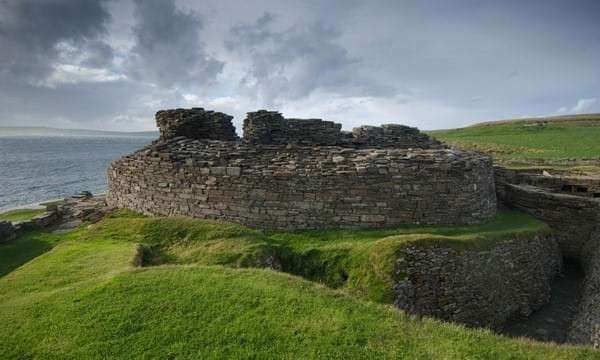Historic Environment Scotland (HES) has started inspecting 5,000 years of history in Orkney as part of its High-Level Masonry Programme. Access will be maintained where possible while inspections are undertaken. The specially trained High-Level Masonry team will use a range of specialist access equipment to carry out hand’s-on tactile inspections to carefully examine the culturally significant sites, some of which are thousands of years old. Eleven historic sites across Orkney including Midhowe Broch, St Magnus Church, and Noltland Castle will be inspected between now and December. The results of the inspections will then inform any necessary repair works or future interventions.
The inspection teams will also work closely with the local works teams and conservation experts to carry out minor repairs as they go, where possible. The High-Level Masonry Programme is assessing the condition of higher-level structures at historic sites following deterioration caused by climate change and a number of other factors, including the materials used in the building’s construction, its age and physical location. Whilst this is not an issue unique to Scotland, HES is believed to be amongst the first heritage managers to approach it in this way and is sharing findings with peer organisations. As a safety precaution, access is currently restricted at Pierowall Church and Westside Church, St Mary’s Chapel, St Magnus Church, Eynhallow Church and Midhowe Chambered Cairn.
Some of Scotland’s most significant and diverse heritage sites
The other sites being inspected are currently accessible to visitors and HES will maintain as much access as possible, where it is safe to do so, while the inspections are being carried out. Visitors may find some temporary access restrictions around the areas currently being inspected, or areas undergoing or awaiting necessary repair work. While the inspection teams are on-site, they will also be available to answer any questions from visitors who are interested in finding out more about the programme and the work being carried out. The inspections follow on from pre-inspection work that was carried out in Orkney earlier this year. This included ground archaeology and ecology reports which were required prior to inspections being carried out.
This work was vital to ensure the safety of the inspection staff and contractors and allowed HES to carefully consider the safest method to inspect sites and plan accordingly. Craig Mearns, Director of Operations at HES, said: “Orkney is home to some of Scotland’s most significant and diverse heritage sites, spanning 5,000 years of history, and these inspections will allow us to assess and mitigate the impact that climate change and other factors has had on them. Visitors will continue to enjoy access to the sites while the inspections are ongoing, where it is safe to do so, and I encourage anyone who is interested in this work to engage with the inspection teams while they are on-site to find out more about what the work involves and why it is an important aspect in the care of these world-renowned heritage assets.”

